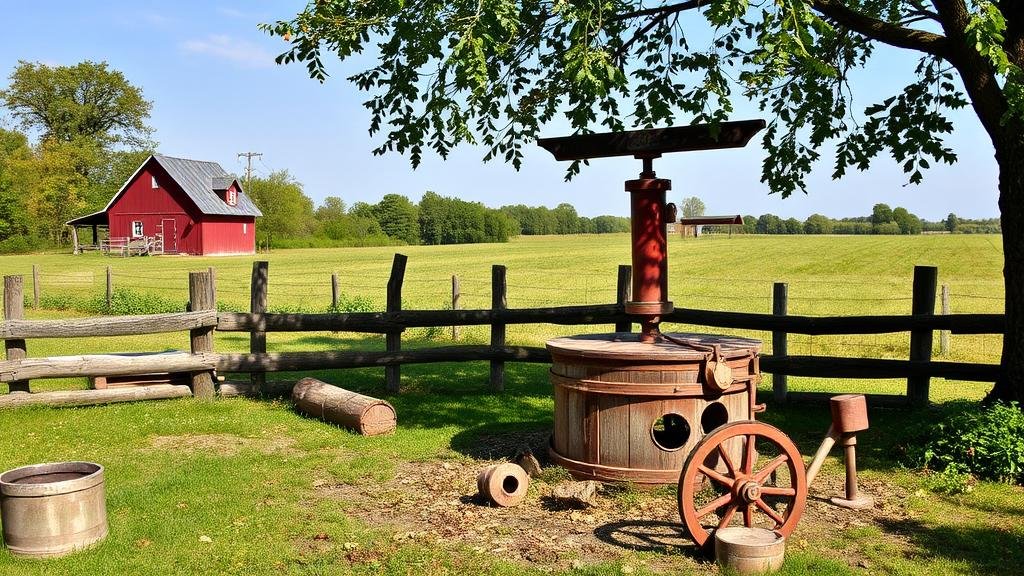Tracing Historical Cider Press Locations for Rural Agricultural Relics
Tracing Historical Cider Press Locations for Rural Agricultural Relics
The resurgence of interest in traditional agricultural practices has led scholars and historians to explore rural landscapes for remnants of historical methods, particularly cider pressing. This article examines the significance of cider press locations and their implications for understanding rural agricultural practices. By tracing these historical sites, we can glean insights into the social, economic, and cultural fabric of rural communities that were once vibrant with agricultural activity.
The Historical Context of Cider Production
Cider production has deep roots in agricultural history, especially in regions like New England and the Pacific Northwest. earliest recorded evidence of cider making in the United States dates back to 1629 in Massachusetts, where settlers recognized the value of apple cultivation and fermentation. By the 18th century, cider had become a staple beverage across rural America, with presses established in farms and communities.
The cider press itself, often a simple yet effective mechanism for extracting juice from apples, symbolizes the ingenuity of agrarian life. Many presses were often purpose-built structures, becoming focal points in local economies. For example, in Virginias Shenandoah Valley, numerous cider presses from the 1800s still have remnants intact, showcasing both the architectural style and the agricultural techniques of the time.
Methodologies for Tracing Historical Locations
To trace historical cider press locations effectively, researchers employ a combination of methodologies, including:
- Archival Research: Analysis of historical documents, including property deeds, agricultural records, and local histories, can reveal the existence and locations of cider presses.
- Field Surveys: On-the-ground surveys often uncover physical remnants of cider presses, such as foundations, machinery fragments, or distinct tree patterns indicative of past orchards.
- GIS Mapping: Geographic Information Systems (GIS) technology allows for the spatial analysis of historical data relative to contemporary maps, identifying potential cider press locations through overlay techniques.
Case Studies of Historical Cider Press Locations
Several case studies illustrate the efficacy of these methodologies in identifying cider press locations:
- Massachusetts Cider Presses (1700s-Present): Research conducted in the town of Deerfield revealed at least 12 documented cider presses with connections to early colonial farmers. Detailed archival exploration confirmed press usage in local agriculture.
- Washington State Orchards (1880s): In Skagit Valley, the discovery of a disused cider press was made through field surveys complemented by historical maps, revealing insights about the cider industry during the regions peak agricultural expansion.
Implications of Cider Press Locations on Rural Agricultural History
Understanding the historical context and locations of cider presses offers wider implications for rural agricultural studies. They not only serve as relics of agricultural practices but also illuminate key social dynamics:
- Economic Significance: Cider production contributed to local economies, providing employment and trade opportunities. For example, the trade of cider at local markets in 19th century New England transformed community interactions and bolstered agricultural sustainability.
- Cultural Identity: Cider making fostered community bonds, particularly through local festivals celebrating harvests. These traditions remain evident in contemporary cider festivals, reflecting a continued appreciation for this agricultural heritage.
The Modern Relevance of Historical Cider Presses
Todays resurgence of interest in artisanal food production enhances the relevance of historical cider presses. Many modern cideries seek to capture traditional methods and flavors, emphasizing the stories and characteristics of heirloom apples. Also, historical cider presses are often repurposed as cultural heritage sites, contributing to agritourism and education.
For example, the historic cider press located in Orange County, California, is now a training facility for aspiring cider makers, connecting them to the regions agricultural past and offering hands-on experiences.
Conclusion
The exploration of historical cider press locations provides valuable insights into the agricultural practices of rural communities. Through a combination of archival research, field surveys, and GIS mapping, researchers can document and preserve these sites, which reflect both economic and cultural significance. As contemporary interest in cider production grows, understanding and preserving these historical relics will continue to enrich our knowledge of rural agricultural heritage.
Actionable Takeaways
Researchers, local historians, and agricultural enthusiasts can consider the following approaches to engage with historical cider presses effectively:
- Conduct local archival research to identify historical records related to cider production.
- Organize community-based field surveys to document any historical remnants.
- Use GIS tools to map potential cider press locations based on historical data.
- Promote the significance of cider heritage by incorporating it into educational programs or local tourism initiatives.



